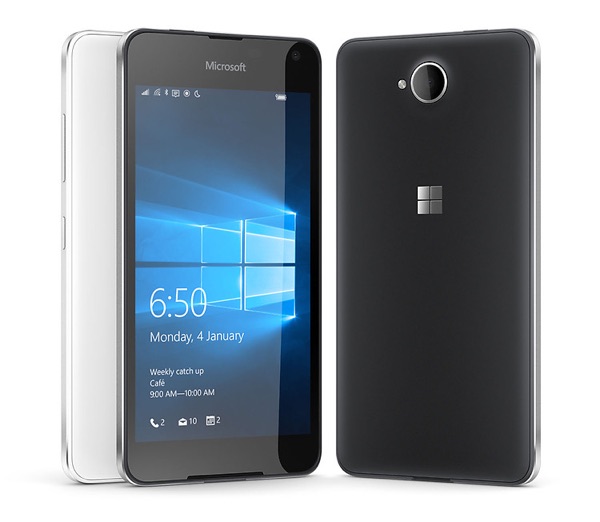Lumia 650 renews the range of 10 Microsoft Windows Mobile smartphones and does so by focusing on design, design features and price of under 250 Euros. A model that completes the range Lumia, covering the central part of the catalog: it is, in fact, a mid-range product positioned between the entry level Lumia 550 and the Lumia 950 and 950 XL.
Those who had not particularly enjoyed the constructive solutions adopted by Microsoft with recent range top, whose bodies polycarbonate appeared not so in line with the traditional standard of high-end models, the Lumia 650 will find constructive solutions, in some respects, even more valuable.
The shell of the Lumia 650, available in white and black, is characterized by the anodized aluminum frame and thick (6.9 mm) and weight (122 grams) content. Microsoft, at the same time, has not sacrificed on the altar of design versatility of use: the smartphone is in fact equipped with removable backcover and expandable memory.
Those who had not particularly enjoyed the constructive solutions adopted by Microsoft with recent range top, whose bodies polycarbonate appeared not so in line with the traditional standard of high-end models, the Lumia 650 will find constructive solutions, in some respects, even more valuable.
The shell of the Lumia 650, available in white and black, is characterized by the anodized aluminum frame and thick (6.9 mm) and weight (122 grams) content. Microsoft, at the same time, has not sacrificed on the altar of design versatility of use: the smartphone is in fact equipped with removable backcover and expandable memory.
The heart of the hardware platform is formed by the Snapdragon 212 SoC, coupled with 1 GB of RAM and 16 GB of storage expandable to 200 GB via microSD, while the 5 "display with HD resolution enhances the Windows user interface 10 Mobile, thanks the OLED technology, and allows you to leverage the practice.
Glance Screen that displays information on your smartphone in stand-by. the rest of the specifications include a camera module articulated in the rear 8-megapixel and 5-megapixel front one.
A product that, thanks to Windows 10 Mobile and the ability to integrate smoothly on Windows, Microsoft platform-based systems in security features like suitable corporate users.
Following the full prospectus of the technical characteristics:
Microsoft Lumia 650
Mobile operating system Windows 10
Processor Qualcomm Snapdragon S212 quad-core (1.3 GHz)
Display
5 "OLED display with 1280 x 720 pixels (297 ppi)
Glass Gorilla Glass
Support Glance Screen
Storage
1 GB of RAM and 16 GB of epsandibili storage up to 200 GB with microSD
cameras
Main 8MP with autofocus and LED flash, optical 28mm f / 2.2
Frontle 5MP, optical f / 2.2
Connectivity WLAN IEEE 802.11 b / g / n
Bluetooth 4.1
LTE
NFC
A GPS-GLONASS, A-GPS, A-Beidou
sensors
ambient light, accelerometer, proximity
Battery 2000 mAh
colors
White and black (matte finish)
Dimensions 142 x 70.9 x 6.9
Weight 122 grams

Comments
Post a Comment